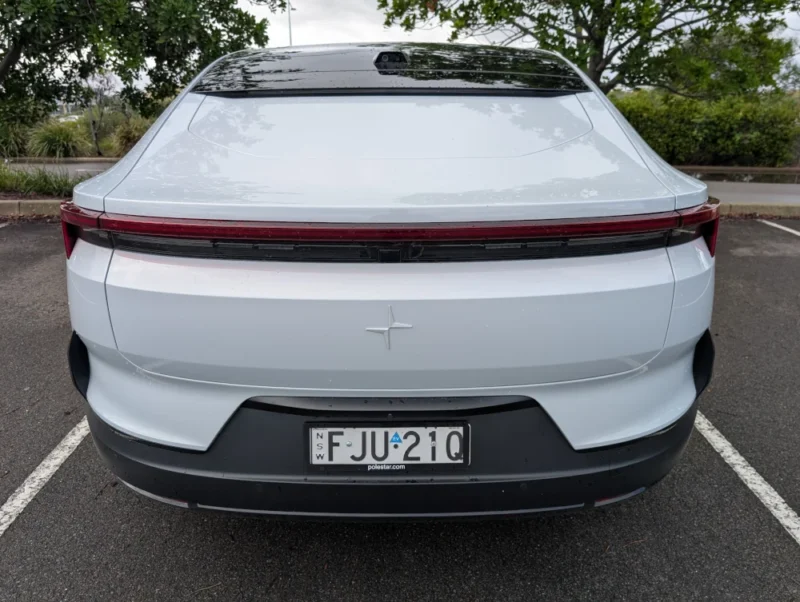The Polestar 4 is the third vehicle to land in Australia from the Swedish based electric vehicle maker and it has quickly become their best performer locally, as forecast by Polestar Australia managing director Scott Maynard prior to the vehicle launch last year.
Up to the end of March 2025, Polestar has delivered 245 Polestar 4s, twice as many as the Polestar 2 (123), and comfortably beating the more expensive Polestar 3, with just 21 sales so far this year.
During my initial test drive of the Polestar 4, I found the controversial rear view camera system worked well enough and did not cause any real visibility issues for me, although more time was needed to properly assess the system and test it under all conditions.
On a personal level, the Polestar 4 is also one of a few EVs on the shortlist to potentially replace my 2019 Tesla Model 3 in the future, so I was also interested to see what the rest of the family thought of Polestar’s latest model.
We spent a week with a Polestar 4 Long range Single motor in Magnesium with the optional Plus Pack and privacy glass on the rear windows. This exact configuration costs $96,561 driveaway in NSW, although a complimentary Plus pack and home charging offer drops the price of similar pre-configured cars to around $85,000 until June 30, 2025.
Why is Polestar on my shortlist?
Coming from a Tesla which is very simple to hop in and drive, with excellent infotainment and well tuned one pedal driving, these are all features I have grown accustomed to and firmly top the list of requirements for any future EV I am considering.
I like cars that are fun to drive too, although I don’t need a hardcore performance car. I am not planning on taking my car to the track, but I do enjoy the feeling of driving on nice country roads in a car that handles the bends confidently without breaking a sweat.
Polestar cars check all of these boxes in spades, and it looks great, with sleek exterior designs that continue to turn heads more than 3 years after the Polestar 2 first arrived in the country.
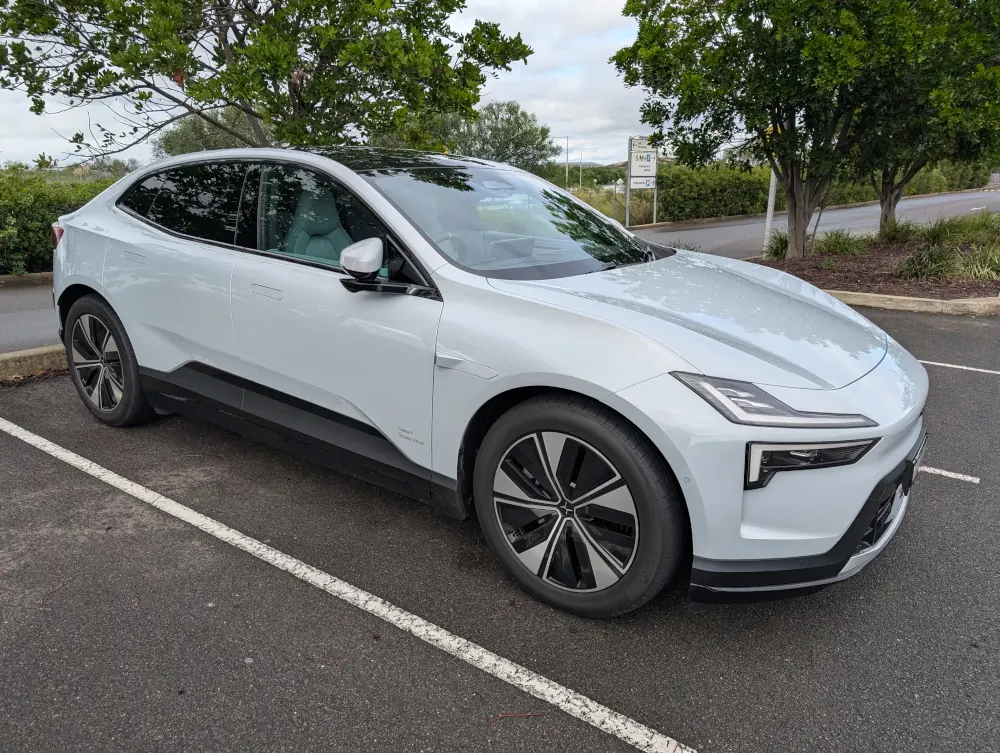
Last but not least, Polestar’s ambitious sustainability goals and continuous efforts to reduce the carbon footprint of manufacturing their vehicles is something I admire, and believe the rest of the industry needs to follow suit.
The Polestar 4 is bigger than you think
After getting back into the Polestar 4 and driving it on suburban roads I was reminded of just how big and wide this car actually is. At 2,139 mm wide and 4,840 mm long the Polestar 4 is actually 19 mm wider and just 60 mm shorter than a Polestar 3, so there is not much difference between Polestar’s two SUVs when it comes to exterior dimensions.
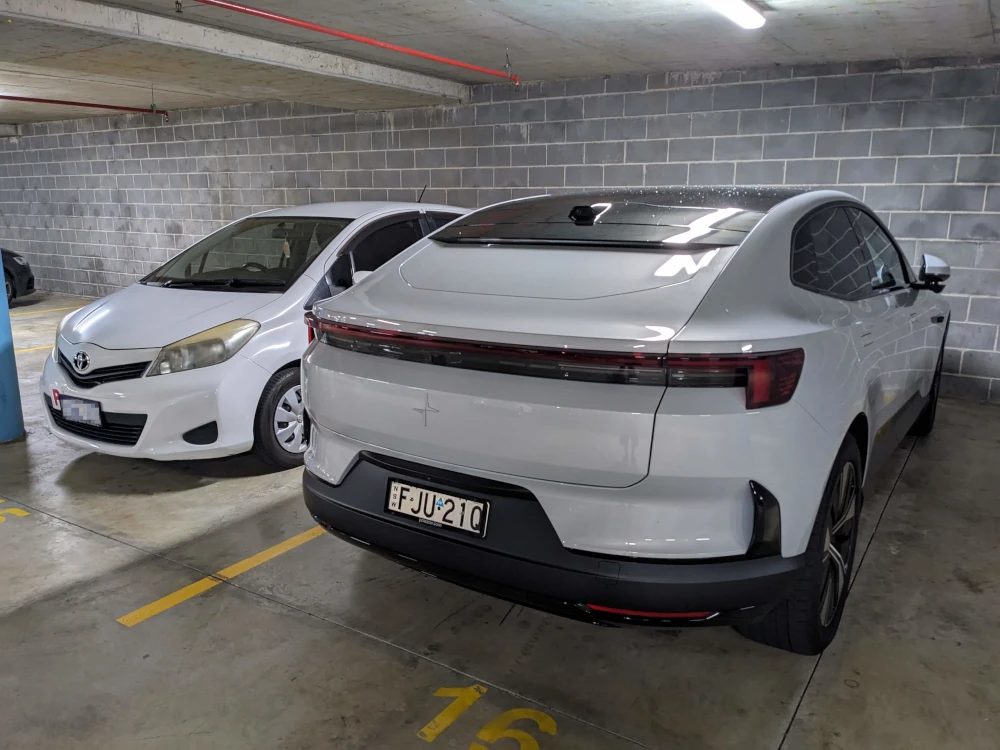
Parked next to a Toyota Corolla hatchback, the Polestar 4 looked massive. You could be forgiven for thinking I parked further back to emphasise the size difference in this photo, although the front of the Polestar 4 also extended well past the Corolla.
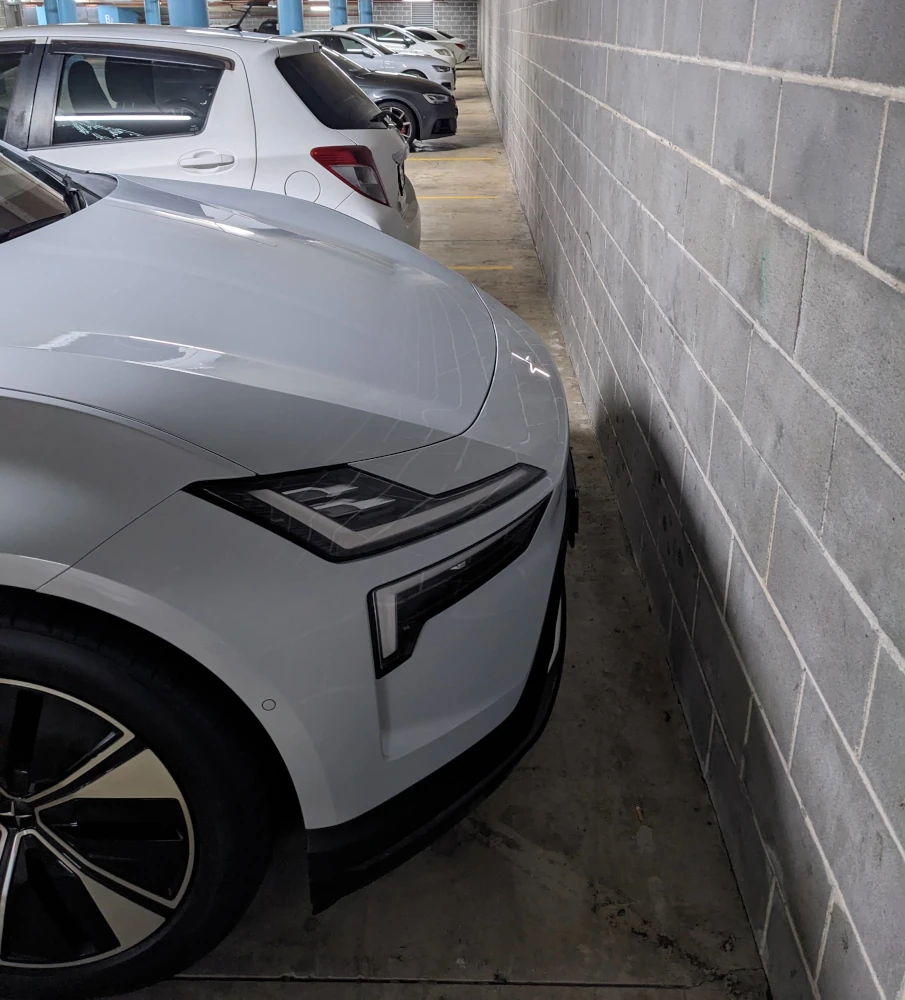
Lastly, compared to my benchmark for large EVs, the Kia EV9 at 1,980 mm wide has a narrower body than the Polestar 4’s 2,067 mm, but the EV9 has chunky mirrors that extend out to 2,263 mm. The EV9 measures 17 cm longer at 5,010 mm, which accommodates a third row of seating or a much bigger boot than the Polestar with the third row folded flat.
Cruising in luxurious comfort
The Polestar 4 may feel unwieldy on suburban or inner city roads, but it comes alive once you hit the open road. The cabin is very quiet at highway speeds apart from a small amount of wind noise, easily drowned out by some tunes playing on the Harmon Kardon sound system.
I found the seats especially comfortable on long drives, with plenty of adjustment to suit drivers of all shapes and sizes. The car I drove was fitted with Mist Tailored Knit fabric. This seems to breathe much better than the WeaveTech fabric used in Polestar 2 cars with the Plus pack, which tended to feel sweaty at times.
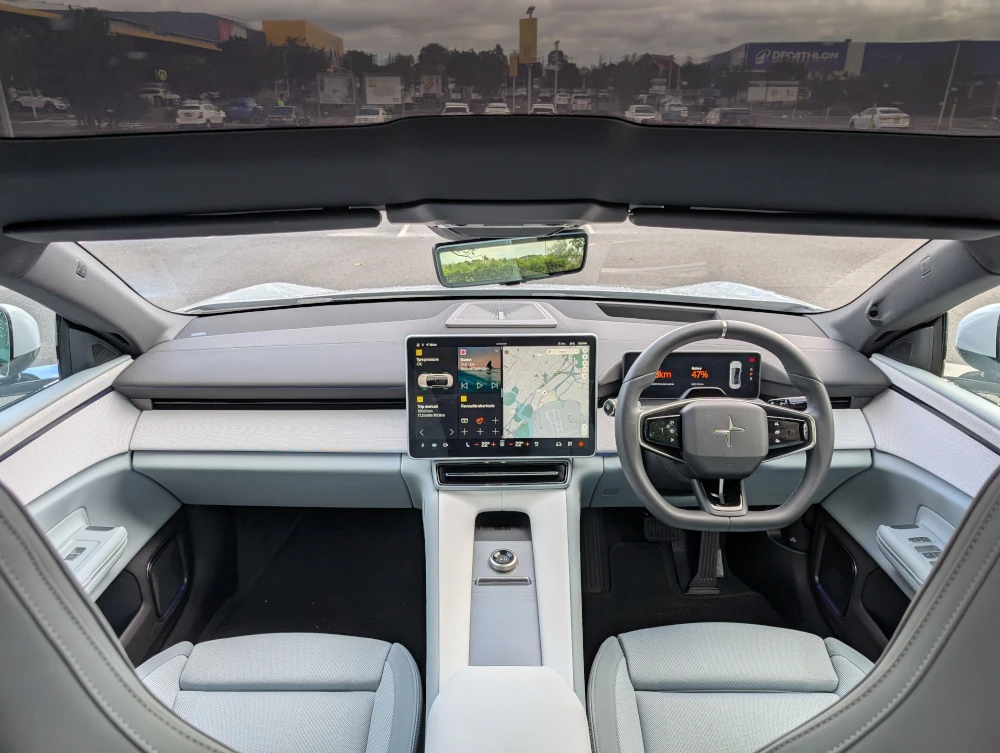
Polestar’s Pilot Assist adaptive cruise and lane centering function worked well in my experience, it kept the car centred in the lane and reacted smoothly to surrounding traffic. It also detects close vehicles in neighbouring lanes and moves over to give them more space which is nice.
Safety systems in the Polestar 4 are not too intrusive either, with only an occasional slap on the wrist from the driver monitoring system if you look at the touchscreen or driver display for a moment too long. Driver monitoring is not fooled by sunglasses either, even if you keep your head still and move just your eyes to look at the screen it picks this up.
Trying to adjust the set speed highlighted one of the downsides I noticed in my first impressions of the Polestar 4, as it was impossible to adjust the cruise control by anything less than 5 km increments using the fiddly haptic feedback buttons on the steering wheel.
Let go of the button too early and it goes up by 5 km as if you’d pressed it quickly. Wait a bit longer until it registers the long press and starts counting up by 1 km, but even if you let go straight away it keeps incrementing and goes up by 5 km anyway which is frustrating.
Cruising on the highway between 100-110 km/h the Polestar 4 consumed 18.9 kWh/100 km over a 242 km loop, equating to nearly 500 km range from its 94 kWh usable battery capacity. In the city it consumed 17.1 kWh/100 km, which is not bad for a large SUV weighing over 2,200 kg.
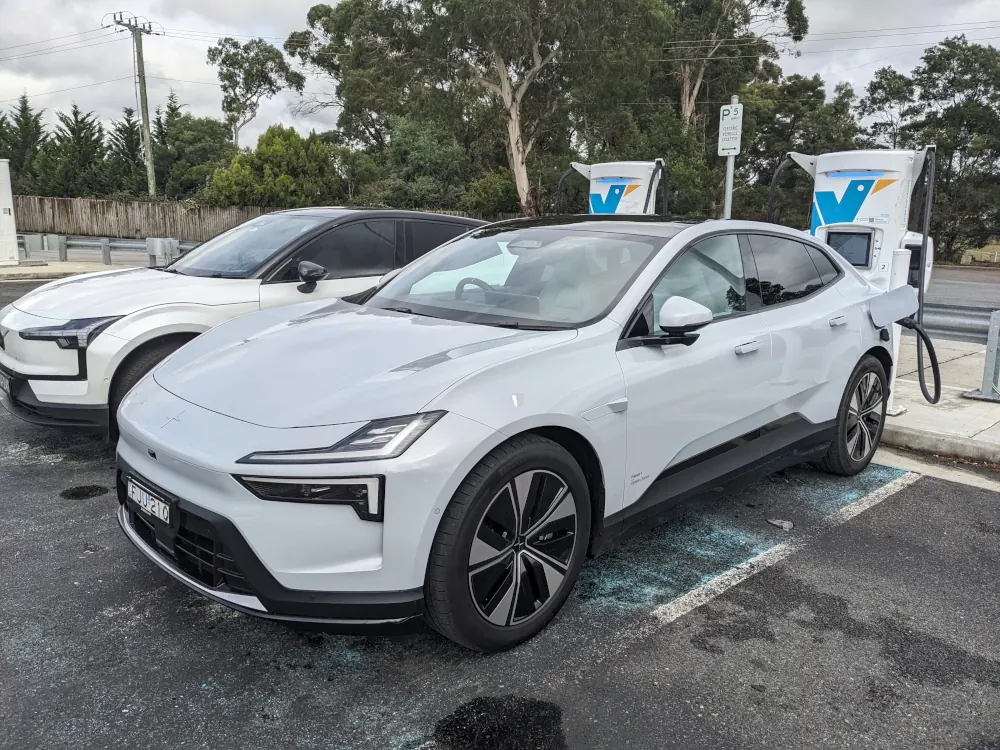
Maximum DC fast charging speed for the Polestar 4 is 200 kW, although my charging session at Evie Sutton Forest peaked at 145 kW. I arrived with ~35 % state of charge which most likely explains the difference, or it could have been a power limit on the charging side with 3 out of 4 chargers occupied at the time.
Deep dive into the rear view camera
Our time driving the Polestar 4 during the media launch was limited to the daytime, so I was keen to experience the rear view camera system in all kinds of conditions including rain and night time. I also wanted to test my theory that your brain would adjust to the focal length of the close up screen compared to the distance view through a traditional rear view mirror.
There was plenty of rain in Sydney during the week I had the car and not once did I see a single rain drop appear on the rear view screen. Polestar says the rear camera housing is positioned to remain clear of obstructions due to natural airflow over the vehicle, but it was good to observe it works as advertised.

I wanted to see what happened if you somehow did get water on the camera though, so my son gladly helped me test this with the garden hose. Even while hosing the camera directly it was hard to see droplets forming, and any water remaining seemed to vanish as if the camera magically wiped itself clean.
Scott Collie, Product Communications Manager for Polestar Australia confirmed there is no cleaning system built into the camera, but it does have a hydrophobic coating which explains why water appears to vanish off the lens.
While driving at night I found the headlights from cars behind could sometimes be glary and limit the rear view although this is probably not much different from a traditional mirror, especially if you are driving in front of a big ute or 4WD.
In terms of focal length concerns, I thought your eyes and brain might be able to adjust over time and learn to refocus quickly when glancing at the rear view camera, like they do with other screens in the car. However, even after a week in the Polestar 4 and not driving other cars at all, I still found it took longer to focus on the rear view screen.
My perspective on the other downsides of the rear view camera system remain unchanged, such as lacking the depth perspective and sharpness of a traditional mirror. Perhaps Polestar could improve both of these aspects with a higher resolution, 3D camera and screen setup in future versions of the system.
Unfortunately the biggest downside of the rear view camera was how my wife felt about it. She suffers from motion sickness and her initial reaction to seeing the rear view screen was along the lines of “I can’t look at that, it makes me feel sick!”
She didn’t like the planets spinning around on the ambience widget of the home screen either, but that was an easy fix by swapping the widget for something else or choosing a planet like Saturn which doesn’t appear to spin.
I spent some time driving with the mirror on instead of the rear view screen, which worked fine if passengers really can’t stand the camera feed moving on the screen. This screen isn’t much use while parking anyway as it is hard to judge distances, the 360 degree surround cameras are crisp and much more helpful for manoeuvring.
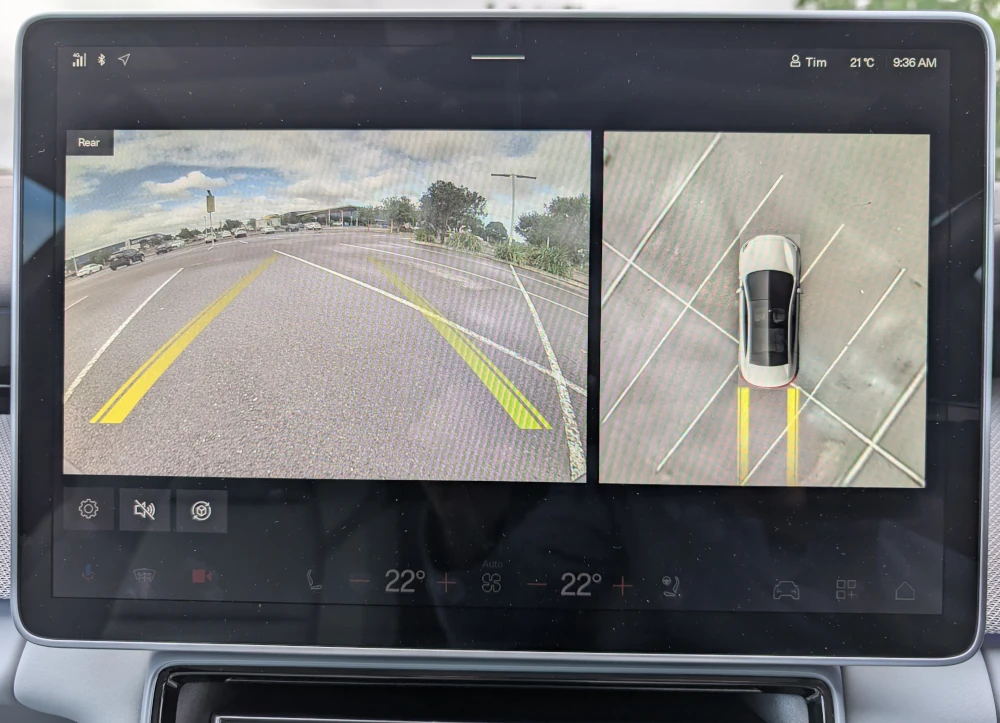
To get a wider understanding of what others think, I asked Polestar what their customers are saying about the rear view camera. Scott Collie said: “The lack of a rear window has drawn a tech-savvy, early adopter crowd who see the lack of a rear window as a positive, so feedback has been really positive.”
Conclusion
Overall I loved driving the Polestar 4, for its level of comfort combined with excellent handling and well tuned one pedal driving. It is a very spacious family SUV that my kids enjoyed riding around in too, especially with the reclining rear seats you get in the Plus pack.
Polestar has executed the rear view camera system well with the current hardware, as my testing in different conditions demonstrated, although there is still room for improvement. I could live with this instead of a traditional mirror as is, but unfortunately it’s a dealbreaker if my wife can’t drive the car without feeling carsick.
Even though we already know the Polestar 5 will come with a similar camera system, I hope Polestar sticks with a traditional rear view mirror in the upcoming Polestar 7 compact SUV. If they can retain the best elements of the Polestar 4 in a smaller package, then the Polestar 7 will definitely be on my shortlist.
Table of key specifications for the Polestar 4
| Variant | Long range Single motor | Long range Dual motor | ||
| Starting price excluding ORCs | $78,500 | $88,350 | ||
| Paint colours and options | Optional packs, Pilot Pack included as standard:
6 exterior metallic colours:
|
|||
| Battery size | 100 kWh gross, 94 kWh usable | |||
| Battery chemistry and manufacturer | Nickel Manganese Cobalt (NMC), CATL | |||
| Range (WLTP) | 620 km | 590 km | ||
| Driven wheels | Rear-wheel drive | All-wheel drive | ||
| Power / Torque | 200 kW / 343 Nm | 400 kW / 686 Nm | ||
| Maximum charging speed | 200 kW DC, 11 kW AC or 22 kW AC with Plus Pack | |||
| Charging time | 22 kW AC (0 – 100 %) – 5.5 hours 200 kW DC (10 – 80 %) – 30 minutes |
|||
| Bidirectional charging | Hardware included, feature not enabled yet | |||
| Exterior dimensions | Length: 4,840 mm Width: 2,139 mm Height: 1,534 mm Wheelbase: 2,999 mm Ground clearance: 166 mm |
|||
| Kerb mass | 2,230 kg | 2,355 kg | ||
| Storage space | Frunk: 15 L Boot, rear seats up: 526 L (including 31 L under floor) Boot rear seats folded: 1,536 L (including 31 L under floor) |
|||
| Service interval | 24 months / 30,000 km | |||

Tim has 20 years experience in the IT industry including 14 years as a network engineer and site reliability engineer at Google Australia. He is an EV and renewable energy enthusiast who is most passionate about helping people understand and adopt these technologies.

